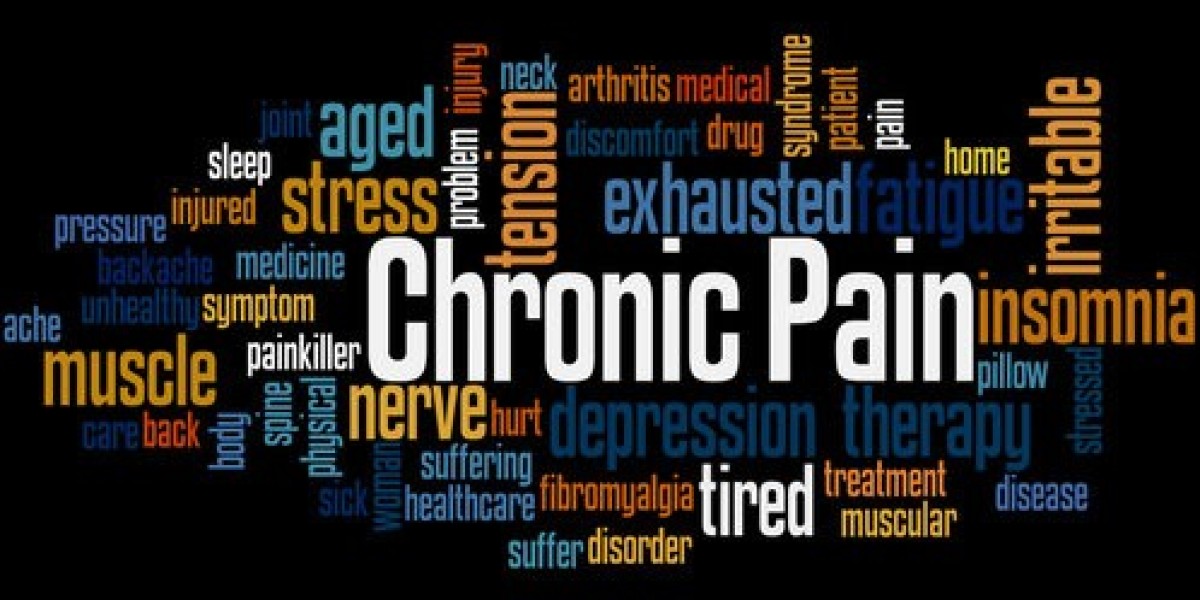Pain is a universal human experience, and it can take many forms, from acute injuries to chronic conditions. However, what many people may not realize is the profound connection between physical pain and mental health. Chronic pain is often accompanied by mental health symptoms such as depression, anxiety, and stress, creating a vicious cycle where physical discomfort can exacerbate psychological distress and vice versa. Understanding the intricate relationship between pain and mental health is crucial for effective treatment and improving quality of life.
This article explores the connection between pain and mental health symptoms, examining how pain can influence mental well-being, how mental health conditions can worsen pain, and what steps individuals can take to break this cycle.
1. How Pain Impacts Mental Health
Over time, this ongoing discomfort can negatively affect emotional well-being, leading to a variety of mental health symptoms, including:
a) Depression
One of the most common mental health conditions associated with chronic pain is depression. Pain, especially when persistent and unrelieved, can result in feelings of sadness, loss of interest in activities, and an overall decline in mood. The two conditions often share overlapping symptoms, such as fatigue, difficulty sleeping, and lack of concentration.
Chronic pain can make individuals feel isolated and trapped, as they may struggle to engage in social, work, or family activities due to their physical discomfort. This isolation can lead to emotional withdrawal and exacerbate feelings of loneliness and despair, further fueling the depression.
Moreover, certain neurochemical imbalances, such as a deficiency in serotonin and norepinephrine, are common in both chronic pain and depression. This overlap in the underlying biological mechanisms can explain why people with chronic pain are more likely to experience depressive symptoms.
b) Anxiety
Anxiety is another common mental health symptom linked to chronic pain. The persistent worry about managing pain, fear of worsening pain, and the uncertainty of future pain can create high levels of anxiety. For some individuals, pain can trigger panic attacks or a heightened state of alertness, as the body enters a constant "fight or flight" mode in response to pain signals.
In addition, anxiety may arise from the emotional toll of living with chronic pain, including concerns about loss of independence, reduced quality of life, and the impact on personal relationships or employment. Individuals with chronic pain may develop a constant fear of engaging in physical activities, worrying that they could worsen their condition or increase their pain levels.
c) Stress and Sleep Disturbances
Chronic pain often disrupts sleep, leading to a vicious cycle where pain impedes restful sleep, and the lack of sleep exacerbates pain sensitivity. Poor sleep quality can increase stress levels, impair cognitive function, and decrease the body's ability to recover from pain or injury.
Stress itself can also contribute to pain by increasing muscle tension and triggering the body’s stress response system, which can amplify pain perception. In fact, research has shown that the body's response to stress can increase inflammation and sensitivity to pain, creating a feedback loop where pain leads to more stress, and stress increases pain.
2. How Mental Health Impacts Pain
The relationship between pain and mental health is bidirectional, meaning that mental health conditions can also impact the experience and severity of pain. Psychological factors such as mood, stress, and cognitive patterns can influence how pain is perceived and managed. Here are some ways in which mental health can exacerbate pain:
a) Hypervigilance and Pain Perception
Mental health conditions, such as anxiety and depression, can lead to hypervigilance, where individuals become overly focused on their physical sensations. This heightened awareness of bodily functions may result in a stronger perception of pain, as individuals are more likely to focus on discomfort and interpret normal bodily sensations as painful.
Anxiety and depression can also lower a person's threshold for pain, making even minor discomfort feel overwhelming. The more an individual worries about pain or catastrophizes potential pain experiences, the more intense their perception of pain can become.
b) Mood and Pain Sensitivity
Negative moods, such as sadness or irritability, can increase pain sensitivity. For example, when someone is in a depressed state, their body's ability to regulate pain may be impaired, making them more susceptible to both physical and emotional pain. Additionally, depression can lead to changes in the brain's pain-processing pathways, which may increase the intensity of chronic pain.
Stress can also exacerbate pain by increasing muscle tension, which can contribute to discomfort, particularly in conditions like tension headaches, back pain, or fibromyalgia. The body’s stress response is linked to the activation of pain receptors, which heightens pain perception and creates a cycle of worsening pain and stress.
c) Chronic Pain and Catastrophizing
Catastrophizing is a cognitive distortion often seen in individuals with mental health conditions like depression and anxiety. It involves magnifying pain or imagining the worst-case scenario regarding one's pain. This thought pattern can lead individuals to perceive their pain as being more intense than it actually is. The more they catastrophize their situation, the more anxiety and fear they experience, which in turn increases their perception of pain.
Research has shown that individuals who engage in catastrophizing thoughts often experience more severe pain, longer pain duration, and greater disability. By focusing on negative thoughts and outcomes, individuals with chronic pain may become trapped in a mental and physical cycle that worsens both their pain and mental health.
3. The Vicious Cycle of Pain and Mental Health
Pain and mental health symptoms are often intertwined in a vicious cycle, where one condition perpetuates the other. This cycle can make it difficult to break free from both physical and emotional distress, leading to chronic suffering. For instance, pain may lead to depression, and the depression may, in turn, increase the perception of pain. Similarly, anxiety about pain can lead to increased physical tension and discomfort, which exacerbates pain, leading to more anxiety.
The inability to escape from this cycle can result in a lowered quality of life, as individuals may become increasingly unable to engage in daily activities or find relief from either their physical or emotional symptoms. This can lead to a decline in functioning, affecting work, social relationships, and self-esteem.
4. Breaking the Cycle: Treatment Approaches
Addressing both pain and mental health symptoms requires an integrated approach that targets the physical, emotional, and psychological aspects of the problem. Some treatment strategies for breaking the cycle of pain and mental health issues include:
a) Multidisciplinary Pain Management
A comprehensive pain management plan is essential for individuals dealing with both pain and mental health symptoms. This might include a combination of medical treatments (such as pain medications or physical therapy), psychological therapy (such as cognitive behavioral therapy or mindfulness), and lifestyle changes (like exercise or relaxation techniques).
b) Cognitive Behavioral Therapy (CBT)
CBT is an evidence-based approach that helps individuals identify and challenge negative thought patterns and behaviors that contribute to both pain and mental health symptoms. For instance, CBT can help individuals manage the catastrophic thinking that often accompanies chronic pain and teach them coping strategies to handle pain-related stress and anxiety.
c) Mindfulness and Relaxation Techniques
Mindfulness-based interventions, such as meditation and deep-breathing exercises, can help reduce stress and anxiety while also promoting a greater sense of control over pain. These techniques teach individuals how to focus on the present moment, allowing them to detach from negative thoughts and reduce their pain sensitivity.
d) Medication
Medications, including pain relievers, antidepressants, or anxiolytics, may be prescribed to address both the physical and psychological symptoms of pain. Antidepressants, for example, can help manage both depression and pain by influencing neurotransmitters that affect mood and pain perception. Similarly, anti-anxiety medications may help reduce the stress and anxiety that contribute to pain.
e) Physical Activity and Exercise
Exercise has been shown to improve both physical and mental health. Regular physical activity helps release endorphins (the body’s natural pain relievers) and can reduce symptoms of depression and anxiety. Gentle exercises, such as yoga, swimming, or walking, can be particularly beneficial for individuals with chronic pain.
Conclusion
The connection between pain and mental health is complex and deeply intertwined. Chronic pain can significantly impact mental health, contributing to depression, anxiety, and stress, while mental health issues can, in turn, exacerbate pain perception and severity. Addressing both the physical and psychological aspects of pain is crucial for breaking the cycle and improving overall well-being. By adopting an integrated approach that includes pain management, psychological support, and lifestyle changes, individuals can find relief from both pain and mental health symptoms, leading to a better quality of life.



